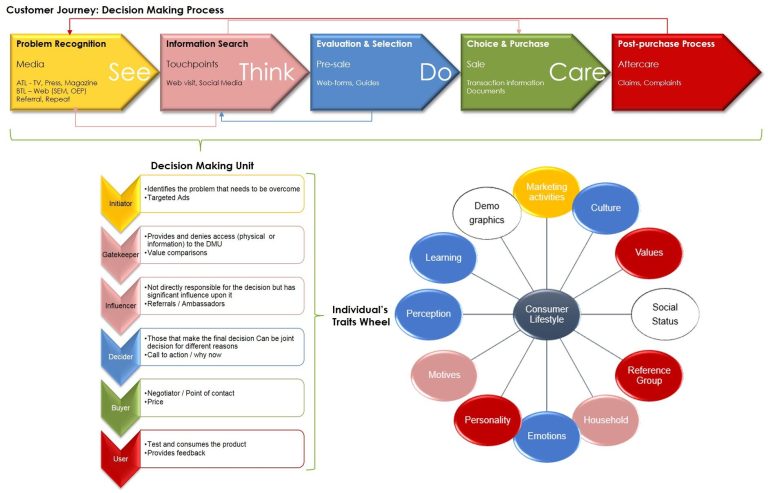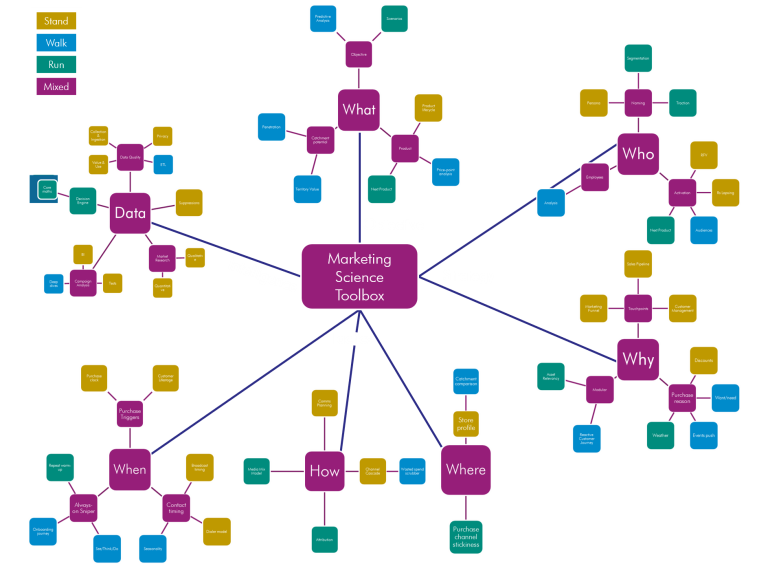Value Mechanisms
Activation - Value - Insight
Focusing on the top 3 layers of the Data Value Stack, where most of the value can be created, if done right
Activation in Marketing Platforms

Customer Journey
This is where a lot of money is spent so you'll want, and need, to get the most out of it, what ever your objectives, e.g. maximising ROI or Market Share, guaranteed returns, focusing on customer Satisfaction.
The Customer Journey breaks into 3 main parts:
o Marketing Funnel - targeting (or excluding) prospects and clients to pique their interest in the product/service. The objective is to overcome the huge difference in numbers viewing and clicking, by understanding and improving pertinent nudges. o Sales Pipeline - once inside the company's website or sales process, the objective is to reduce any leakage along the journey to maximise purchases.
o Client Management - ensuring the purchase is understood and used to increase repurchasing, upselling, cross-selling and advocacy.
The trick is to seem personalised whilst retaining economies of scale.

Testing & Learning Loops
'Running to stand still' sums up the problem of diminishing responses from stale marketing, over-targeting (spam/stalking), competitor activity, etc.
The advantage of modern marketing is that proper testing can produce learnings than enable the best approach to be understood and adopted. This can also happen along each stage of the Customer Journey, to understand and fix where touchpoints (or lack of) are leaking.
Tests need to be set up without bias, with proper use of statistics and big data. The learning needs to be humanistic - focused on the contextual 'so-what' nudge from the customers viewpoint and experiences. There are numerous real world factors, math options and problems to overcome but done right continuous incrementals combine to deliver step-changes that really shifts the needle.
Value Mechanisms

Marketing Science Toolbox
There are many tools that support marketing questions but sometimes they roll up too many issues and become a 'black box' that doesn't explain how it's doing it. This breaks the learning loops that could be useful for Strategic insight. Off- the-shelf solutions and AI are examples that give an answer but you're not sure what question they were answering.
The Marketing Science toolbox has over 40 tools split into the 6 Dimensions (what, who, why, how, when and where) and then into Stand > Walk > Run. Some complex tools fit across more than one Dimension to linking better into the core response drivers of marketing activation platforms.

Toolbox - What
The 'What' dimension focuses on the Product or Service, but quickly connects to other dimensions (when, who, why). Amongst other things, useful for market sizing, understanding market share and opportunities.

Toolbox - Who
The ‘Who’ dimension creates the first difference between finance and marketing, enabling multi-dimensional choices. Great marketing must be relevant and connect on the human level, where they are in their busy lives. Marketing Science defines these in terms of target audience, segmentations, profiles and personas.

Toolbox - Why
The ‘Why’ dimension is there to ensure marketing listens to the prospect/customer and puts the understanding their motives front and centre. This helps the creative proposition and storytelling to be relevant to the other dimensions.

Toolbox - How
The 'How' dimension is about how prospects and customers consume information. Its not which platforms/ channels are they technically on, but whether they actively engage there, to ensure spend in each channel is being effective.

Toolbox - When
The 'When' dimension is everything around time and timing that comes in many different flavours. Hitting the window of opportunity is fundamental - not too early, not too late, just right - mathematically optimised.

Toolbox - Where
The 'Where' dimension looks at where the customer interacts or purchases the product/service. Basically where all the revenue occurs so key questions here are, what can we do to maintain, improve or change certain acts or habits.

Toolbox - Data
This is a massive topic but the intention here is to cover a few topics, setting the scene, best practice and advising on a few actions that will set up for success shift the needle.
We need your consent to load the translations
We use a third-party service to translate the website content that may collect data about your activity. Please review the details in the privacy policy and accept the service to view the translations.
